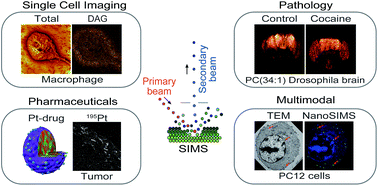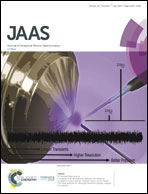SIMS imaging in neurobiology and cell biology
Abstract
Secondary ion mass spectrometry (SIMS) has been increasingly recognized as a powerful technique for visualizing molecular architectures in the fields of neurobiology and cell biology. There are two main platforms of SIMS, namely ToF-SIMS and nanoscale SIMS (nanoSIMS), which are capable of imaging different types of biomolecules with resolution at the single cell and organelle level, respectively. In this review, we focus on the fundamental aspects of SIMS, as well as on the current ongoing instrumental developments of this technology. Selective applications of SIMS in neurobiological and cell biological research are provided to demonstrate its strengths, limitations, and future potential in the field. We add several examples of correlative imaging techniques that combine SIMS with other technologies, while highlighting the current trend for comprehensive and specific bio-imaging.

- This article is part of the themed collections: SIMS for Biological Applications, Recent Review Articles and JAAS Recent Open Access Articles


 Please wait while we load your content...
Please wait while we load your content...